Volvo Penta Power Generation Engine Technical Data
Type designation | TD520GE | TAD530/31/32GE | TAD730/31GE | TAD732GE |
Power, prime/stand-by | Refer to the sales literature
| |||
Torque, Prime/Standby | ||||
No. of cylinders | 4 | 6 | ||
Bore x Stroke | 108 x 130mm | |||
Displacement | 4.76 (L) | 7.15 (L) | ||
Weight, dry | 550kg | 575kg | 760kg | 900kg |
Weight, wet | 580kg | 606kg | 804kg | 968kg |
Firing order | 1-3-4-2 | 1-5-3-6-2-4 | ||
Compression ratio | 17.5:1 | 18.0:1 | ||
Idle | 800–950 rpm | |||
Type designation | TAD620VE | TAD720/21VE |
Power, prime/stand-by | Refer to the sales literature | |
Torque, Prime/Standby | ||
No. of cylinders | 6 | |
Bore x Stroke | 98 x 126 mm | 108 x 130 mm |
Displacement | 5.7 (L) | 7.15 (L) |
Weight, dry | 510kg | 680kg |
Firing order | 1-5-3-6-2-4 | |
Compression ratio | 18.4:1 | |
Idle | 800 rpm | 800 – 950 rpm |
Lubrication System
Oil change intervals can vary between 150 and 500 hours depending on the quality of the lubricant and the sulphur content of the fuel. Note that the oil change interval should never be longer than 12 months.
If longer intervals are required than those stated in the table below, the condition of the oil must be tested regularly by the oil manufacturer.
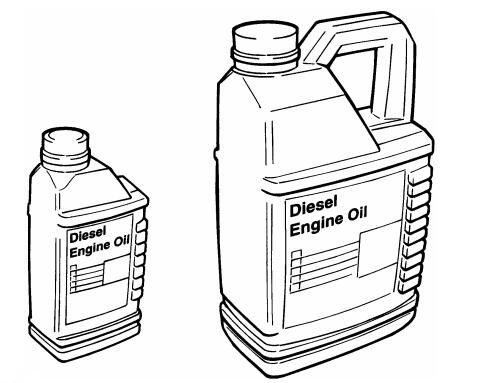
Engine | Sulfur content in fuel, by weight | |||
<0.5% | 0.5–1.0% | >1.0%(1) | ||
Oil quality(2) / Oil change interval, reached first in operation: | ||||
500 hours or 12 months | 300 hours or 12 months | 250 hours or 12 months | 150 hours or 12 months | |
TAD620VE | VDS-2 | VDS ACEA E3(3) | - | ACEA E2 API CF, CF-4, CG-4 |
TAD720VE TAD721VE | VDS-3, VDS-2 ACEA E7, E5, E3(3) API CI-4, CG-4, CH-4 | - | - | - |
TD520GE TAD530GE TAD531GE TAD730GE TAD731GE | VDS-2 ACEA:E7, E5, E3(3) API:CG-4, CH-4 | - | VDS ACEA E2 API CF, CF-4 | - |
Closed crankcase venting TAD532GE NOTICE! Fully synthetic oil must be used. | ACEA:E4 API:CI-4, CH-4 | - | - | - |
Open crankcase ventilation TAD532GE TAD732GE | VDS-2 ACEA E2, E5 API CG-4, CH-4 | - | VDS ACEA E2 API CF, CF-4 | - |
1) If sulphur content is > 1.0% by weight, use oil with TBN > 15.
2) Lowest recommended oil type, engine oil of an higher type can always be used.
3) API: CG-4 or CH-4 are acceptable in markets outside Europe, instead of ACEA E3.
Viscosity
Select the viscosity according to the table.
The temperature values refer to stable ambient temperatures.
* SAE 5W/30 refers to synthetic or semi-synthetic oils.
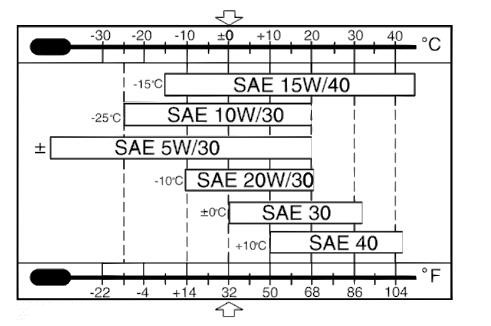
Oil Pressure
Oil pressure, hot engine:
Engine Designation | When running in normal mode | Idling speed |
TD520GE | 280–330 kPa (41–48 psi) | min. 90 kPa (13 psi) |
TAD530/531/32GE | 450–480 kPa (65–70 psi) | |
TAD620VE | 370 kPa (54 psi) |
min. 80 kPa (12 psi) |
TAD730/731/32GE | 480–520 kPa (70–75 psi) | |
TAD720/21VE | 350 kPa (51 psi) |
Oil change capacity
Oil pan, standard
Engine Designation | With oil filter |
TD520GE | 13 liters (3.4 US gal) |
TAD530/531/32GE | |
TAD620VE | 16 liters (4.2 US gal) |
TAD730/731GE | 20 liters (5.3 US gal) |
TAD732GE | |
TAD720VE | |
TAD721VE |
Fuel System
Fuel specification
Fuel must comply with national and international standards for commercially supplied fuels.
NOTICE! Bio-diesel according to EN 14214, kerosene and light fuel oil may not be used.
The following fuel standards are approved:
EN 590 (with nationally adapted environmental and cold weather requirements)
ASTM D 975 No 1-D and 2-D
JIS KK 2204 (may only be used if lubricity corresponds to EN 590)
Sulfur content: According to current national legislation. If the sulfur content exceeds 0.5 weight-percent, the oil change intervals must be amended;
Extremely low sulfur content fuel (EC1 diesel in Sweden and city diesel in Finland) can cause a loss of up to 5% of power and an increase in fuel consumption of about 2–3 %.
General fuel requirements
The fuel quality is essential for engine function, durability and emission compliance. Only fuels meeting relevant legal requirements and national and international standards shall be used; such as European EN590 diesel and North American ASTM D975 diesel.
Usage of fuels or fuel blends that do not comply with the below specifications given in this document is not allowed and Volvo Penta will not accept warranty in case of fuel related engine damages.
Diesel fuel requirements
An insufficient cetane number (“ignitability”) leads to poor startability and increased exhaust emissions. Requirement; cetane number min 45.
Insufficient density and viscosity will reduce the power and increase the fuel consumption.
Excessive density and viscosity will endanger the durability and function of the fuel injection equipment. Requirement; viscosity 1.5-4.5 mm2/s (cSt) at 40 °C and density 800-860 kg/m3 at 15 °C.
Sufficient fuel lubricity is essential to protect the fuel injection system against excessive wear. Requirement; wear scar max 520 μm in the HFRR test (ISO 12156)
Excessive sulfur content will increase emissions and give engine corrosion and wear.
Requirement; The max allowed sulfur content is5000 ppm, with the restriction that oil of quality VDS 3 must be used for sulfur content above 3000 ppm.
Water will give corrosion and wear of engine parts and enables microbial growth in the fuel tank.
Organic contaminants (bacteria, fungi etc.) can block fuel filters and inorganic contaminants (dust, sand) can cause severe damage to the fuel injection system.
Requirement; max allowed water content 200 ppm and max allowed total contaminant content 30 ppm.
Cold flow properties are determined by the cloud point (the temperature when wax crystals start to fall out) and the CFPP (cold filter plugging point). The oil companies are always responsible for providing fuels with the correct cold flow properties for any time of the year.
FAME (“biodiesel”)
Requirement;The max allowed FAME content is 30%, if the FAME part complies with EN14214 and the diesel complies with EN590, with specific service requirements as below:
• Oil change and oil-filter replacement intervals must be halved.
• Fuel filters shall be changed at every oil change and fuel filter housings and seals shall be changed annually.
• A fuel heater should be used due to the high viscosity of FAME at low temperature.
In order to avoid starting problems FAME should not be used below -10°C.
• A fuel filter with water separator must be used since FAME is hygroscopic.
• When shifting from regular diesel fuel to higher FAME content the fuel tank must be cleaned and the fuel
filter must be replaced after 50 h.
• If the engine has not been used for a period over 4 weeks the tank and fuel system must be flushed clean by running the engine on at least one full tank of regular diesel.
NOTICE! Engines for emergency applications, e.g. standby genset , may only run with market diesel fuel with minimum FAME content.
Paraffinic fuels (“Synthetic Diesel”) - HVO and GTL
HVO (Hydro-treated Vegetable Oil) are renewable, and GTL (Gas-To-Liquid) are fossil, paraffinic fuels. Usage of paraffinic fuels will give lower emissions, but also marginally higher fuel consumption.
NOTICE! Volvo Penta approves usage of neat HVO and GTL that complies with EN 15940, as well as HVO and GTL blends into diesel fuels complying with the quality requirements above.
Kerosene (“Jet fuel”)
Kerosene has low cetane number, low viscosity, low lubricity and high sulfur content compared to diesel fuels.
NOTICE! Kerosene F-63 can be used, but Volvo Penta does not guarantee emission compliance. F-34/JP8 and F-44/JP5 can also be used, but only with lubricity additives to ensure max 520 μm wear scar in the HFRR test (ISO 12156).
Additives
The oil companies shall always ensure that their fuels meet relevant requirements and are fit for their purpose. Their responsibility includes any use of additives for proper engine performance and function.
NOTICE! It is not allowed to add secondary treatment additives ("diesel boosters"), lubricants, gasoline or alcohol into the fuel tank.
Cooling System
Engine Designation | Volume (engine+radiator and hoses)(1) | The thermostat begins opening/is fully open |
TD520GE | 12.2 liters (3.22 US gal) | 83/95 °C (181–203 °F) |
TAD530/531GE | 12.5 liters (3.3 US gal) | |
TAD532GE | 13 liters (3.43 US gal) | |
TAD620VE(2) | 6 liters (2 US gal) | |
TAD730/731GE | 14 liters (3.7 US gal) | |
TAD732GE | 32 liters (3.7 US gal) |
87/102 °C (189–216 °F) |
TAD720VE(2) | 10 liters (3 US gal) | |
TAD721VE |
1) The coolant volumes listed apply to the use of Volvo Penta original coolants
2) engine only
Coolant
Volvo Penta Coolant VCS and VCS Ready Mixed (yellow) are based on Organic Acid Technology, OAT.
IMPORTANT!
Different types of coolant must not be mixed with each other.
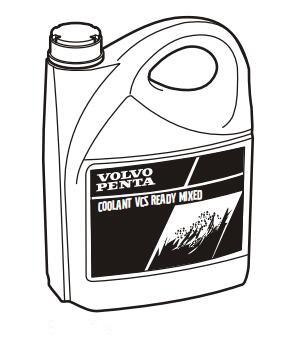
Water Quality
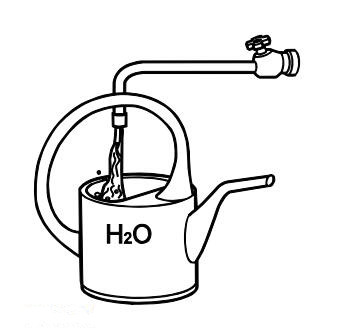
ASTM D4985:
Total solid particles | <340 ppm |
Total hardness | <9.5° dH |
Chloride | <40 ppm |
Sulfate | <100 ppm |
pH value | 5.5–9 |
Silica (acc. ASTM D859) | <20 mg SiO2/l |
Iron (acc. ASTM D1068) | <0.10 ppm |
Manganese (acc. ASTM D858) | <0.05 ppm |
Conductivity (acc. ASTM D1125) | <500 µS/cm |
Organic content, CODMn (acc. ISO8467) | <15 mg KMnO4/l |
Electrical System
Engine Designation | System voltage | Battery capacity, 24V/12 V |
TD520GE | 24 alt. 12 V | 2x110/2x88 Ah |
TAD530/531/532GE | ||
TAD620VE | ||
TAD730/731/732GE | ||
TAD720VE | ||
TAD721VE |
Generator
Voltage/Amperage/Power (V/A/W) for the above Volvo Penta Engine model is: Alt.1 – 14/55/770; Alt.2 – 28/35/980
Disengageable clutch
Engine Designation | Type | Gear ratio | Size | Weight |
AP S11A2 | Single plate | 1:1 | 292 mm (11 1/2") | 66 kg (146 lbs) |
AP D11A2 | Double plate | 83 kg (183 lbs) | ||
AP T14A2 | Triple plate | 355 mm (14") | 209 kg(461 lbs) |
Identification Numbers
Engine Designation
The following information can be read from the engine designation:
T = Turbocharger 3 = Generation
A = Air-to-air charge air cooler (CAC) 1 = Version
W = Water-to-air charge air cooler (CAC) V = Engine for stationary and mobile application
D = Diesel engines G = Generating Set Engines
10 = Cylinder displacement, liters E = Emisson certified engine
Location of engine plates
The engines are supplied with two engine identification plates. One of these is supplied uninstalled so that it can be mounted in a suitable site close to the engine. The other plate is riveted to the cylinder block (see illustration).
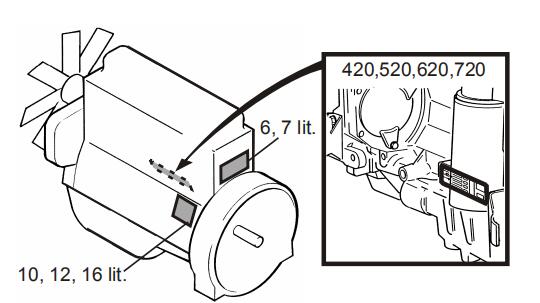
The engine identification plate contains the serial number and engine designation. This information should always be used as a reference when ordering a service and replacement parts and when contacting your Volvo Penta workshop.
Copyright © Guangxi Dingbo Power Equipment Manufacturing Co., Ltd. All Rights Reserved | Sitemap
Update cookies preferencesseokeywords:
test2